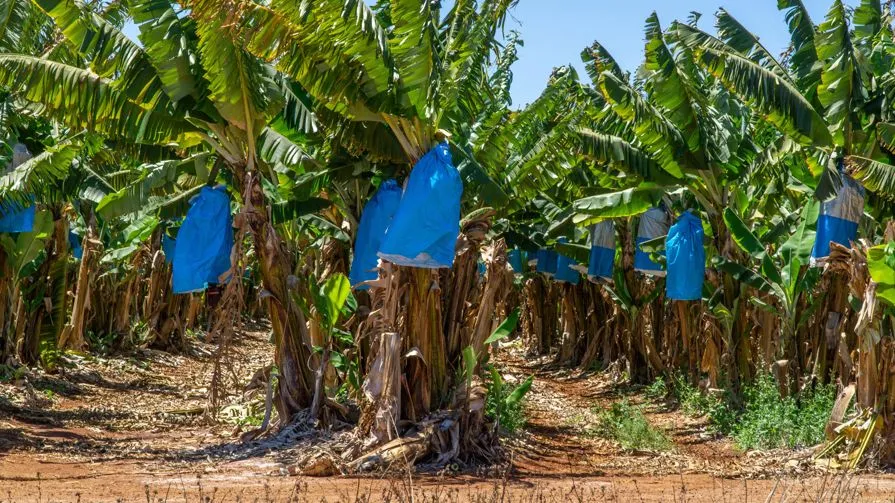Stop Banana Trees from Taking Over Your Garden: Tips to Control their Spread
Banana trees can be a beautiful addition to any garden, but their rapid spread can quickly become overwhelming. Understanding the basics of banana trees and why they spread is key to preventing further growth. In this article, we will explore how to identify when your banana tree is spreading and the different methods you can use to stop its growth. It’s important to remember that proper maintenance plays a significant role in preventing the spread of banana trees. If you’re looking to learn more about these topics, read on to discover how you can put an end to the spread of banana trees.
The basics of banana trees and why they spread.
Banana trees, also known as Musa spp., are a herbaceous plant that belongs to the family of Musaceae. These trees are known for their large leaves and long, curved fruits. But why do banana trees spread so easily?
The answer lies in their unique growth pattern. Banana trees grow from a central underground rhizome that sends out shoots or suckers. These suckers can develop into new banana plants, creating a clump of trees that share the same root system.

This spreading behavior has some advantages for banana farmers. For example, if one tree in a clump is infected with disease or pests, it can be removed without affecting the entire plantation. Additionally, the close proximity of these plants allows for easier harvesting and maintenance.
However, this same behavior can also lead to problems if not managed properly. Overcrowding can occur which reduces fruit quality and increases susceptibility to disease and pests.
In conclusion, understanding the basics of how banana trees grow and spread is essential for farmers looking to optimize their production while minimizing risk factors such as disease outbreaks or pest infestations. With proper management techniques in place, banana plantations can continue to thrive and provide nutritious fruits for people around the world to enjoy!
How to identify when your banana tree is thriving.
Banana trees are a tropical fruit tree that can be found growing in many different regions around the world. However, it’s important to know when your banana tree is spreading so you can take proper care of it and ensure its continued growth.
One way to identify when your banana tree is spreading is by looking at the size and shape of its leaves. As the plant grows, its leaves will become larger and more pronounced, allowing you to easily spot any changes or growth spurts.
Another way to tell if your banana tree is spreading is by examining the roots. If you notice that the roots are starting to grow outwards or appear thicker than before, this could indicate that the plant is expanding and taking up more space in its environment.
It’s also important to keep an eye on any new shoots or stems that may be growing from the base of your banana tree. These shoots can eventually develop into new plants if left unchecked, potentially leading to overcrowding and stunted growth for all involved.
By being mindful of these signs and taking appropriate action when necessary, you can ensure that your banana tree continues to thrive and produce delicious fruit for years to come.
The different ways to stop the spread of banana trees are.
Banana trees are a staple crop in many parts of the world, but they are also susceptible to disease and pests that can quickly spread and devastate entire plantations. It is therefore essential for banana growers to take proactive measures to prevent the spread of these threats.
One effective way to stop the spread of banana tree diseases is through good hygiene practices. This means regularly cleaning tools, equipment, and hands with disinfectants or soaps that kill harmful bacteria or viruses. In addition, farmers should avoid walking on their crops with dirty shoes or clothing that may carry pathogens from other farms.

Another important method for preventing the spread of diseases is through proper pruning techniques. By removing infected leaves or branches as soon as they appear, farmers can prevent the disease from spreading further into healthy parts of the tree.
In addition to hygiene and pruning practices, farmers can also use biological control methods such as introducing beneficial insects like ladybugs or using natural predators like predatory mites to keep pest populations in check.
Finally, it is vital for banana growers to be aware of any potential threats in their area and take action immediately if an outbreak occurs. This may involve quarantining infected plants or even destroying them entirely if necessary.
In conclusion, stopping the spread of banana tree diseases requires a combination of good hygiene practices, proper pruning techniques, biological control methods, and prompt action when outbreaks occur. By implementing these strategies consistently across all farms worldwide we can ensure a stable supply chain while minimizing environmental impacts caused by overuse pesticides concurrently protecting our health by ensuring food safety standards are met at all times!
The importance of proper maintenance to prevent the spread of banana trees is paramount.
Proper maintenance is crucial when it comes to preventing the spread of disease in banana trees. These plants are susceptible to a wide range of diseases, many of which can be devastating if left unchecked.
One common problem that can arise is the spread of Fusarium wilt. This fungal disease attacks the roots and stems of the tree, causing them to rot and eventually die. If left untreated, it can quickly spread throughout an entire plantation and destroy all the trees.

« if banana is apple apple is grapes
The Ultimate Guide to Knowing When Your Banana Bread is Done: Tips and Tricks for Perfect Baking! »
To prevent this from happening, it’s important to practice good hygiene in your banana plantation. This means regularly cleaning equipment and tools that come into contact with your plants, as well as removing any infected plants immediately.
Another key factor in preventing disease spread is proper soil management. Bananas thrive in rich soil with good drainage, so make sure you’re using quality compost or fertilizer and avoid over-watering your trees.
Finally, consider using biological control methods such as introducing beneficial insects or microbes that can help keep harmful pathogens at bay.
By taking these steps to properly maintain your banana trees, you’ll not only ensure their health but also contribute to a more sustainable agricultural industry overall. So don’t skimp on maintenance – invest in healthy bananas for a healthier planet!
Check out our other articles to find out even more about banana.
The spread of banana trees can be a problem for many people and proper maintenance is essential to prevent it. Knowing the basics, how to identify when your banana tree is spreading, and different ways to stop its spread will help you stay ahead of any potential issues. If you’re looking for more information on this topic or other related topics regarding bananas, make sure to check out our other articles!











